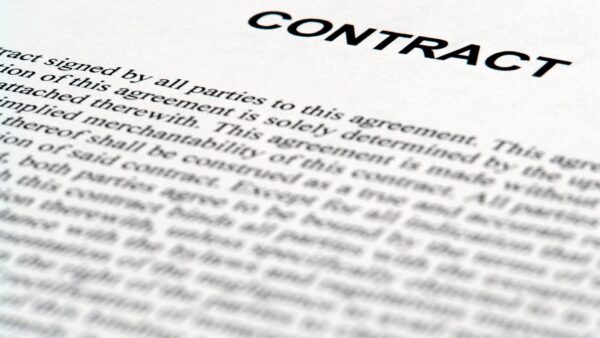With heavy rainfall becoming more commonplace, do construction contracts make provision for weather-related delays? Laura Lintott explains

Extreme weather events caused by climate change are causing substantial economic concerns for the construction industry, due to damaged buildings and infrastructure, project delays and disrupted supply chains.
After the hottest summer in 140 years, the UK is now grappling with heavy rainfall, which poses a different kind of problem for construction sites working to tight programmes. So, how do construction contracts deal with adverse weather such as heavy rain?
JCT
Relevant events, which may entitle the contractor to an extension of time (EOT), include ‘exceptionally adverse weather conditions’.
However, these do not constitute a relevant matter. While the contractor may be entitled to an EOT, it will not be entitled to any loss and expense. The employer will not get its delay liquidated damages. The contractor will need to issue a delay notice to the architect or contract administrator immediately upon becoming aware of the weather impact on completion, who will then decide whether there are exceptionally adverse weather conditions.
The contractor may struggle to provide robust evidence justifying an EOT application. To help, JCT works with the Met Office to provide two weather report forms that can be used in construction planning and management.
NEC
If a certain threshold is met, weather can amount to a compensation event, which may allow for both EOT and loss and expense regarding rain, temperature and snow.
However, other types of adverse weather are not covered. The objective test is based on ‘weather measurement’ compared to historic records in the local area. The contractor must notify the project manager of a compensation event within eight weeks of becoming aware of it.
FIDIC
A contractor may get an EOT where a delay is caused by unforeseeable ‘exceptionally adverse climate conditions’. This can cover different types of weather and is quantifiable. The threshold is lower than the JCT and NEC forms.
However, where a weather-related delay is concurrent with a delay caused by the contractor, the contractor may not be awarded an EOT.
How to prepare for extreme weather events
- Contract. Be mindful of what constitutes ‘exceptionally adverse weather’ in the construction contract. If a standard definition is not suitable, consider including a bespoke definition (drafted with appropriate legal support). A contract can list exceptionally adverse weather conditions constituting a relevant event.
- Evidence. It must be shown that the weather event is the cause of the delay and, in some contracts, that the contractor used its best endeavours to mitigate any delay.
- Planning and scheduling. Factor weather events into any risk management planning and ensure schedules account for tasks that should not be carried out in adverse weather.
- Records. Keep records of the weather conditions on site on an ongoing basis.
- Notices. Comply on time with notice provisions under the construction contract.
- Safety. Ensure the project team wears personal protective equipment and have clear warning/evacuation plans in place.
- Practical steps. Protect the ongoing works using temporary roads to drain out rainwater, water pumps and raised pallets to store materials off the ground. Cover earthworks to protect them from rain and install windows and exterior façade as early as possible to protect the interior.
Laura Lintott is Of Counsel at Watson Farley & Williams.
Comments
Comments are closed.












Great insights!
As a matter of fact, I do the whether recording and Safet regularly.
Thanks for this.
In South Africa (JBCC agreements)we tend to ignore ‘historic data’ = except records kept during the Constrcution period. The contractor must show that was impossible or unsafe to carry out scheduled tasks. It may be impossible to cast concrete below/above certain temperatures – also applies to appropriate personal safety equipment, to lift items using a crane (or work in an exposed section of the works) if the windspeed above a specified rate or if rain prevents normal work …. if the building is ‘watertight’ such climatic extremes do not apply. The contractor generally is not entitled to delay costs but may be entitled to cost for hiring a pump to clear a waterlogged site, or similar …